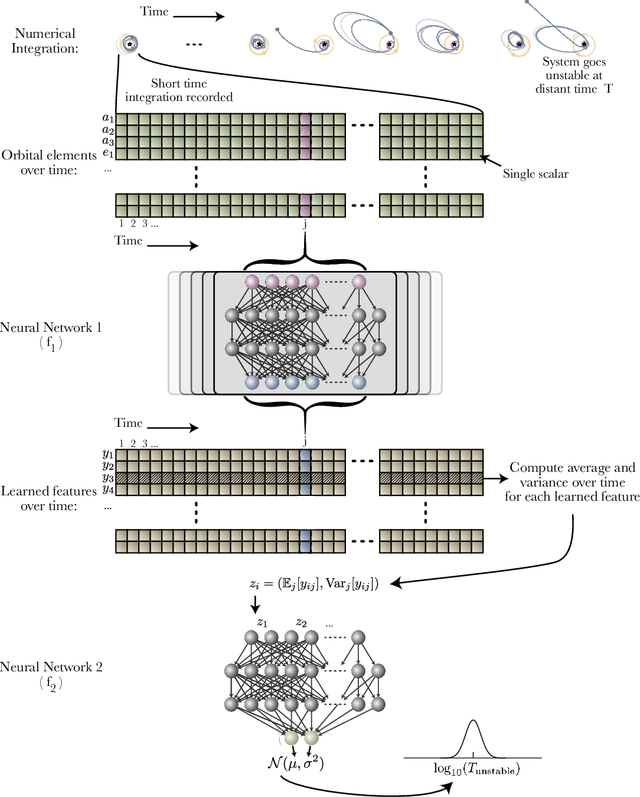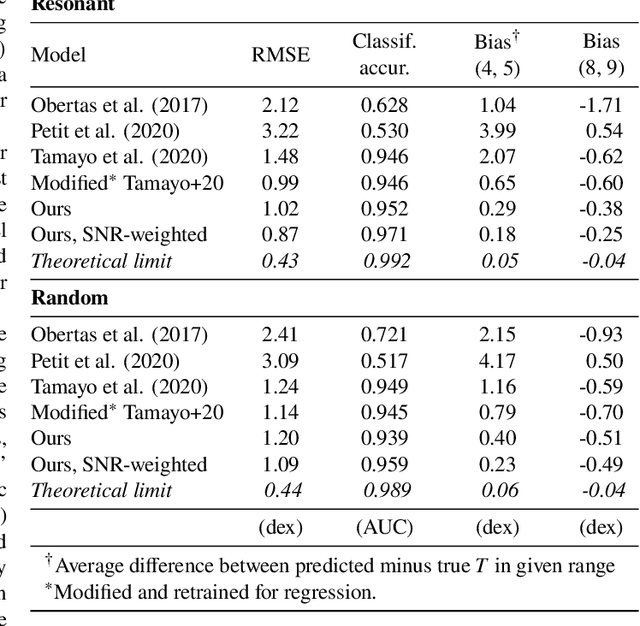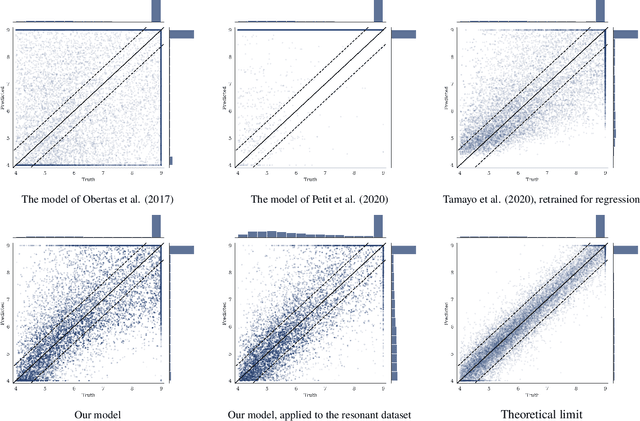Philip J. Armitage
A Neural Network Subgrid Model of the Early Stages of Planet Formation
Nov 08, 2022Abstract:Planet formation is a multi-scale process in which the coagulation of $\mathrm{\mu m}$-sized dust grains in protoplanetary disks is strongly influenced by the hydrodynamic processes on scales of astronomical units ($\approx 1.5\times 10^8 \,\mathrm{km}$). Studies are therefore dependent on subgrid models to emulate the micro physics of dust coagulation on top of a large scale hydrodynamic simulation. Numerical simulations which include the relevant physical effects are complex and computationally expensive. Here, we present a fast and accurate learned effective model for dust coagulation, trained on data from high resolution numerical coagulation simulations. Our model captures details of the dust coagulation process that were so far not tractable with other dust coagulation prescriptions with similar computational efficiency.
Particle clustering in turbulence: Prediction of spatial and statistical properties with deep learning
Oct 05, 2022



Abstract:We demonstrate the utility of deep learning for modeling the clustering of particles that are aerodynamically coupled to turbulent fluids. Using a Lagrangian particle module within the ATHENA++ hydrodynamics code, we simulate the dynamics of particles in the Epstein drag regime within a periodic domain of isotropic forced hydrodynamic turbulence. This setup is an idealized model relevant to the collisional growth of micron to mmsized dust particles in early stage planet formation. The simulation data is used to train a U-Net deep learning model to predict gridded three-dimensional representations of the particle density and velocity fields, given as input the corresponding fluid fields. The trained model qualitatively captures the filamentary structure of clustered particles in a highly non-linear regime. We assess model fidelity by calculating metrics of the density structure (the radial distribution function) and of the velocity field (the relative velocity and the relative radial velocity between particles). Although trained only on the spatial fields, the model predicts these statistical quantities with errors that are typically < 10%. Our results suggest that, given appropriately expanded training data, deep learning could be used to accelerate calculations of particle clustering and collision outcomes both in protoplanetary disks, and in related two-fluid turbulence problems that arise in other disciplines.
A Bayesian neural network predicts the dissolution of compact planetary systems
Jan 11, 2021



Abstract:Despite over three hundred years of effort, no solutions exist for predicting when a general planetary configuration will become unstable. We introduce a deep learning architecture to push forward this problem for compact systems. While current machine learning algorithms in this area rely on scientist-derived instability metrics, our new technique learns its own metrics from scratch, enabled by a novel internal structure inspired from dynamics theory. Our Bayesian neural network model can accurately predict not only if, but also when a compact planetary system with three or more planets will go unstable. Our model, trained directly from short N-body time series of raw orbital elements, is more than two orders of magnitude more accurate at predicting instability times than analytical estimators, while also reducing the bias of existing machine learning algorithms by nearly a factor of three. Despite being trained on compact resonant and near-resonant three-planet configurations, the model demonstrates robust generalization to both non-resonant and higher multiplicity configurations, in the latter case outperforming models fit to that specific set of integrations. The model computes instability estimates up to five orders of magnitude faster than a numerical integrator, and unlike previous efforts provides confidence intervals on its predictions. Our inference model is publicly available in the SPOCK package, with training code open-sourced.
 Add to Chrome
Add to Chrome Add to Firefox
Add to Firefox Add to Edge
Add to Edge